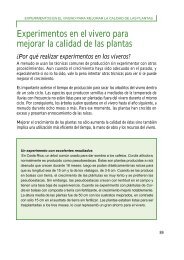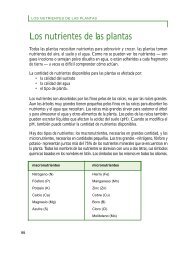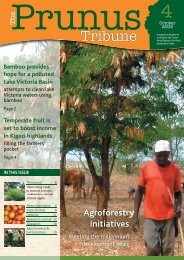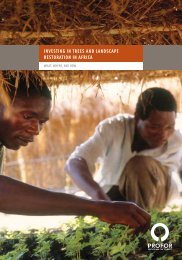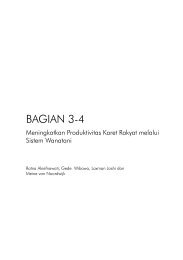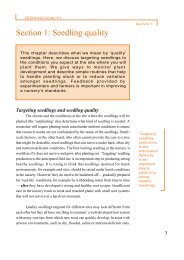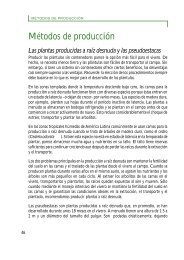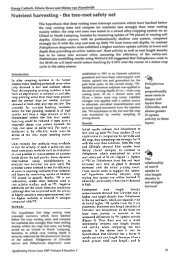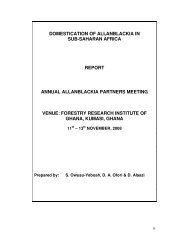Section 5: Nursery and plant hygiene - World Agroforestry Centre
Section 5: Nursery and plant hygiene - World Agroforestry Centre
Section 5: Nursery and plant hygiene - World Agroforestry Centre
Create successful ePaper yourself
Turn your PDF publications into a flip-book with our unique Google optimized e-Paper software.
NURSERY AND PLANT HYGIENE<strong>Section</strong> 5Use 10%householdbleach tosterilizetools <strong>and</strong>containers.Chlorine is a contact sterilizer <strong>and</strong> has no systemic functions. It canonly kill organisms that are exposed to it such as those suspended in the solutionor on the surface of the equipment. Therefore, it is a good idea to soak containers<strong>and</strong> other equipment in water for 24 hours before sterilizing so that fungalspores, for example, can germinate which makes them more susceptible to thetreatment. A 10% bleach solution is also used to sterilize bench surfaces <strong>and</strong>other work surfaces.The disposal of used chlorine solutions may be a problem: thehypochlorite ion attaches to organic compounds in the soil, can be taken up inthe food chain <strong>and</strong> can accumulate in the body fat of animals <strong>and</strong> humans. Thiscan pose a serious problem when large amounts of chlorinated water needs tobe disposed of. A practical solution for small amounts is to let a container withchlorinated water st<strong>and</strong> until it does not smell of chlorine any more.Note: As with any other chemical disinfectants, chlorine is a hazardoussubstance <strong>and</strong> misuse can lead to serious injury or even death. Use only inwell-ventilated areas.A less hazardous alternative to chlorine is hydrogen peroxide (H 2O 2),which breaks down to water <strong>and</strong> oxygen. Use 1 part commercial H 2O 2(35%)to 100 parts water. Other disinfectants frequently used, especially in thelaboratory, are formalin, mercuric chloride <strong>and</strong> 70% alcohol. These are allmore expensive than bleach, <strong>and</strong> in addition, formalin <strong>and</strong> mercuric chlorideare extremely poisonous <strong>and</strong> are suspected carcinogens.Propagation substratesWhen substrates, in particular soil <strong>and</strong> organic material, are broughtinto a nursery, they provide easy ways for pests to come too. In bare-rootnurseries or when practising open-ground propagation, pests may accumulatein the soil <strong>and</strong> make large-scale treatments or, in extreme cases, a move to anew location, necessary.The st<strong>and</strong>ard treatments for substrates are either chemical fumigationor sterilization with hot steam or sunlight. Chemical fumigation with methylbromide or related chemicals is very hazardous <strong>and</strong> expensive. Methyl bromide58






